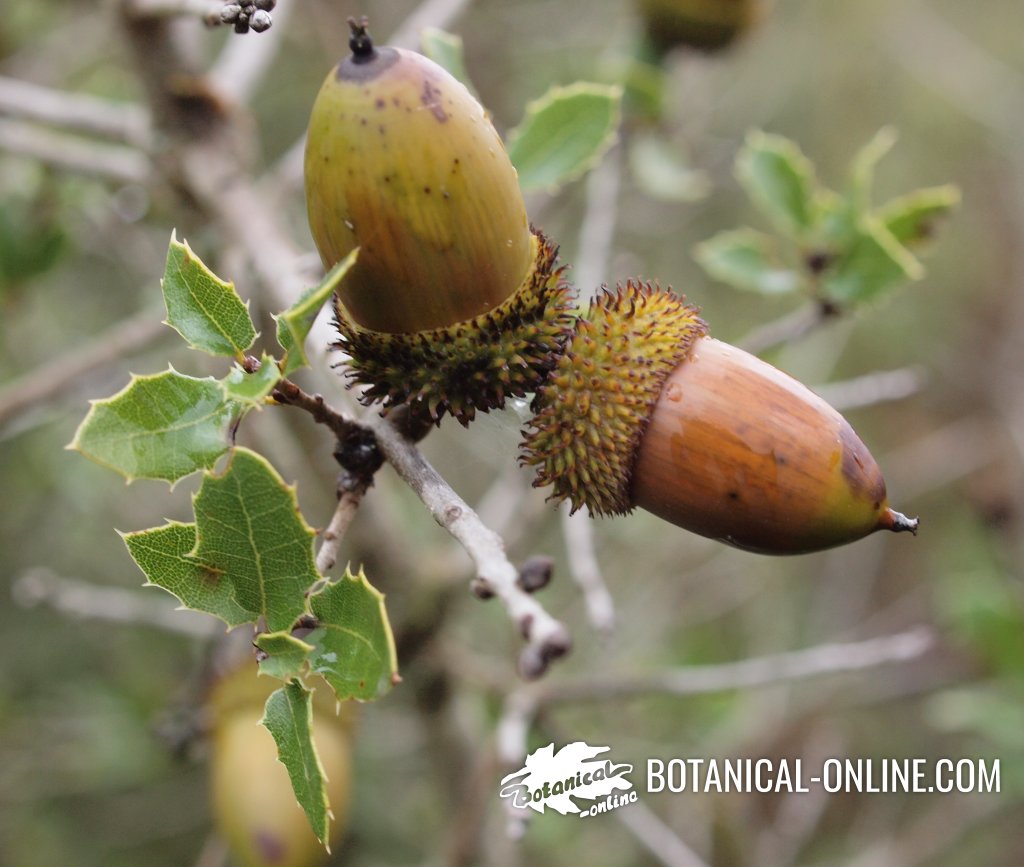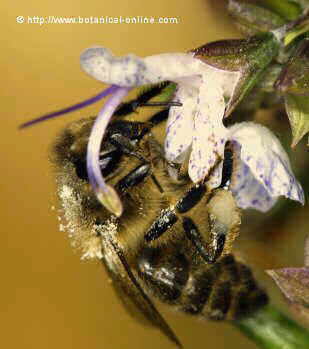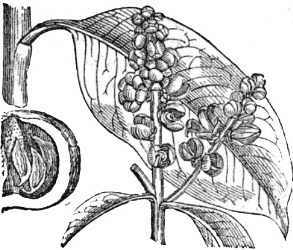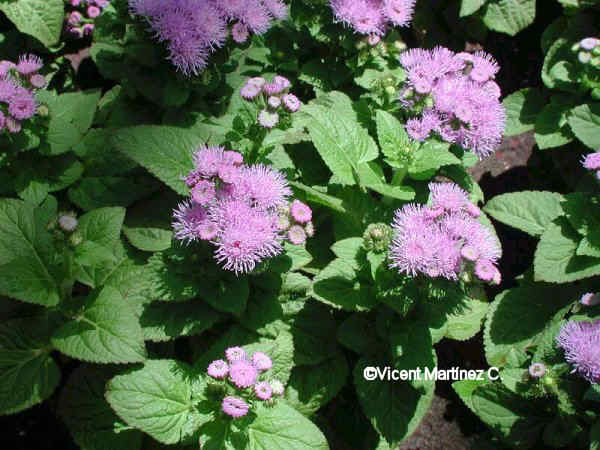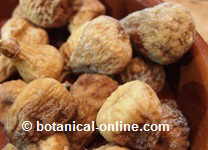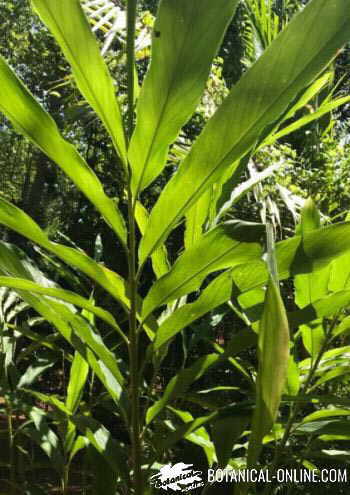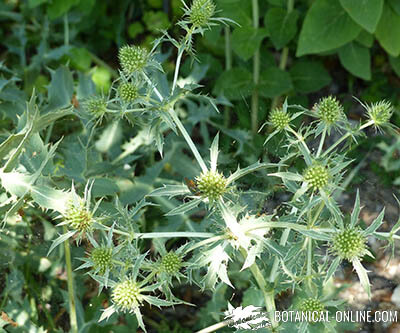Contents
- 1 Health benefits of lettuce (Lactuca sativa L.)
- 2 MEDICINAL PROPERTIES OF LETTUCE
- 2.1 Lettuce, a good sedative
- 2.2 Lettuce: A very good diuretic
- 2.3 Lettuce to remove flatulence
- 2.4 Lettuce for the circulatory system
- 2.5 Properties of lettuce for respiratory diseases
- 2.6 Lettuce for excessive desire
- 2.7 What is lactucarium?
- 2.8 Lettuce is very good to calm pain
- 2.9 Lettuce for eyes care
- 2.10 Cosmetic properties of lettuce
- 2.11 Main properties of lettuce
- 3 EDIBLE PROPERTIES OF LETTUCE
Health benefits of lettuce (Lactuca sativa L.)
Characteristics of lettuce
Common noun: Lettuce
Scientific noun: Lactuca sativa L.
Family: Daisy family – Compositae or Asteraceae
Habitat: It seems to be a species from Asia. Widely spread as a cultivated species, it can be found sometimes wild.
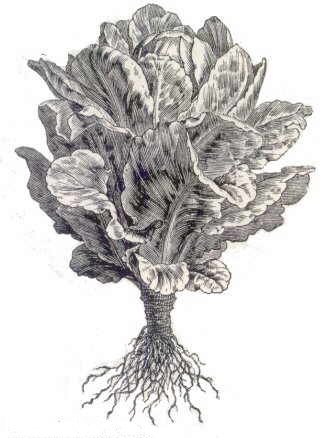 Botanical illustration of lettuce Botanical illustration of lettuce |
Description of lettuce:
Herbaceous annual plant of the daisy family. Very short stems. Bright green leaves, spineless. The lower ones entire, with a short petiole. Upper leaves sessile, more rounded and ovate. Yellow flowers with violet tinges in panicles. Grey fruits with a prominent beak as long as the rest of the fruit.
Components of lettuce:
- Lactucin
- Acids: ascorbic, aspartic, citric, glutamic, linoleic, oleic, malic, oxalic, palmitic, stearic (Leaves)
- Beta-carotene (leaves)
- Fiber (leaves): pectins (leaves),
- Vitamins: A, C, E, B1, B2, B3 (leaves)
- Minerals: Potassium, calcium, magnesium, sodium, sulphur, iron, aluminium, copper, cobalt, silica, selenium, zirconium, yttrium (leaves) strontium (Stem).
- Amino acids: Alanine, cystine, histidine, glycine, isoleucine, leucine, lysine, serine,
MEDICINAL PROPERTIES OF LETTUCE
INTERNAL USE PREPARATIONS WITH LETTUCE
Lettuce, a good sedative
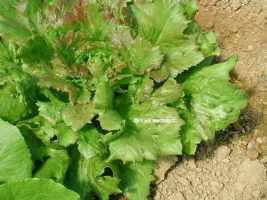 Photo of cultivated lettuce Photo of cultivated lettuce |
Lettuce has a tranquilizing effect. It helps to calm the nerves, to control palpitations and to sleep better at nights, avoiding the insomnia. (Eat a good lettuce salad, with olive oil before going to sleep.
This property is increased if we carry out a decoction with 50% of lettuce leaves and we drink a couple of glasses a day, one in the mornings and another one before going to bed) The component that grants it this property is the lactucin, one of the main components of the juice of the lettuce.
Lettuce: A very good diuretic
Lettuce is a very good diuretic because it stimulates the urine elimination, very appropriate in those cases in that it is necessary to stimulate the kidneys to increase micturition, in illnesses like: obesity, arterial hypertension, dropsy , edemas, kidney pain, nephritis , kidney stones, renal inadequacy, inflammation of the bladder (cystitis), etc.
Equally is used as a support in the diets dedicated to reduce sugar in the blood, by means of the elimination of corporal liquids. (Decoction to 50% of lettuce leaves during 10 minutes. Drink a couple of glasses a day)
Lettuce to remove flatulence
Lettuce contains carminative properties, removing the annoying flatulence from the organism and avoiding the sensation of the stomach becoming full. (Drink the liquid of the previous decoction) This preparation is considered digestive, helping us to facilitate the digestion and protecting the stomach from the intestinal inflammations.
Lettuce for the circulatory system
Lettuce is very good for the circulatory system diseases. It improves circulation, prevents arteriosclerosis and diminishes cholesterol (Salads of raw lettuce or fried lettuce)
Properties of lettuce for respiratory diseases
The decoctions of lettuce leaves are interesting for the affections of the respiratory tract, helping to combat cold, asthma attacks and bronchial spasms. If the plant is allowed to germinate, one can take profit from floral stems to carry out the same decoctions with more outstanding properties that those of the leaves. (Decoction of 100 gr. of lettuce in 1 liter of water. Three cups a day)
To combat cough, it can be carried out a lettuce syrup (See recipe) Take a couple of heated glasses a day.
Lettuce for excessive desire
Lettuce is attributed with anti-desire values such as it was already highlighted in the past by the Roman naturalist and writer Pliny, whose thoughts were present well into the Middle Ages. (Eat lettuce in salads)
in cases of dysmenorrhea, to favor menstruation, avoiding the painful or very prolonged menstruations symptoms, it is very useful to use an infusion during half hour of 100 g of tender leaves for a liter of water can be carried out. Drink 2 or 3 cups a day.
What is lactucarium?Lactucin, along with lactucerol and lacturic acid form the basis of lactucarium, a brew with diuretic and hypnotic properties. It has been used in some occasions as a substitute of the opium, because it presents similar effects, although without opium addictive values. It appears either in the wild lettuce or in chicory, but it has generally been obtained from wild lettuce. This juice was a very well-known beverage during the XIX century, when addicts to the opium didn’t have this drug. It is obtained from the latex that the plant produces when being cut. Then it can be taken drunk by diluting it in hot water or, if the liquid is boiled until evaporating all the water, a pasta is formed, that, once dry, can be smoked. This product was taken in doses non superior to a coffee spoonful, or in form of syrups. Given its toxicity, it should not be used in homemade preparations !!! |
EXTERNAL USE PREPARATIONS WITH LETTUCE
Lettuce is very good to calm pain
Lettuce is a very good analgesic. In external use, it has emollient properties so that it can be used to mitigate the pains produced by blows, twists, sprains, bruises, etc. (Decoction of tender leaves during 15 minutes in water. Filter it, leave it to become cool and apply like a cataplasm. These properties are increased by adding some drops of olive oil to the pasta.) (Another juice preparation is obtained by mashing the plant. Filter it and apply on the aching area)
The analgesic properties of lettuce can be used to mitigate the pain of the sunburns (Decoction of lettuce leaves in water for 15 minutes. Cool and apply the liquid with gauze on the affected are.
Lettuce for eyes care
Lettuce can be used as ocular eyewash to treat conjunctivitis, rheums, tired eyes, etc. (Boil during 6 minutes 50 gr of leaves in ½ liter of water, with some drops of oil. Cool and wet the aching eyes by means of a gauze.)
Cosmetic properties of lettuce
- Natural Deodorant: To prevent foot odor and underarm odor, the juice of lettuce, like the radish, is one of the best natural deodorant. (Take some lettuce juice and refrigerate. After bathing, wet feet or armpits with some juice)
- Skin Care: Lettuce can be used to make masks or cleansers for skin care.
Main properties of lettuce
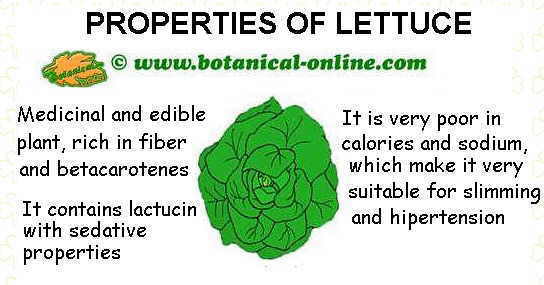
A summary of the main properties of lettuce
EDIBLE PROPERTIES OF LETTUCE
Lettuce is a food that should not habitually lack in our meals. Besides the previous properties, we should keep in mind that its low fat and carbohydrates contents and it is very high in water, so it has got a little caloric power of only 13 Kcal for each 100 g.. Lettuce is very appropriate for weight loss diets.
Its wealth in minerals, especially potassium that is very necessary to maintain an appropriate level of liquids in the body, together with calcium and phosphorus makes it specially appropriate for the correct well-being of the bones.
It also presents many oligoelements, that are not very habitual inside the vegetable world, as selenium, an antioxidant that has a fundamental paper in the prevention of certain type of cancers, as those of colon, prostate or lungs. It also prevents precocious aging and even helps to combat dandruff. Among the plants that present more proportion of this element we found thistle (Silybum marianum) or valerian (Valeriana officinalis)
It contains many necessary amino acids for the formation of the proteins, some, as alanine, necessary for the construction of the muscular and nervous tissues, other as glycine, for the correct operation of the immunologic system. It presents vitamins C and E, but, it is specially very rich in beta-carotene which is transformed into vitamin A by the liver. This component which appears with more proportion in carrots (Daucus carota) has been demonstrated to have a great influence as antioxidant and anticancerous.

Photo of vegetable salad with lettuce, tomato, onion, red pepper and beetroot
How to eat lettuce?
It is convenient to eat it fresh, so that not to spoil its nutritious and medicinal properties. We have to keep in mind that the internal leaves of lettuce, although more appetizing, present smaller quantity of components that the darker green external ones.
It is very important to wash lettuce properly because it can have traces of organic products, insects, dirt, etc. Gardens have many times fecal matter which has to be eliminated completely not to produce food poisoning.
![]()
Toxicity of lettuce: Take care with Lactuca virosa!
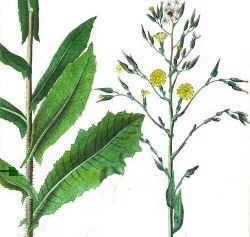 Botanical illustration of Lactuca virosa, a plant with toxic alkaloids Botanical illustration of Lactuca virosa, a plant with toxic alkaloids |
Cultivated lettuce (Lactuca sativa) and its mountain variety (Lactuca scariola) don’t present toxicity.
Although the second species is little used in feeding, it is also eatable and its properties are similar to the cultivated variety, although it presents bigger percentages in its components.
Cultivated lettuce is unmistakable, but mountain lettuce can be mistaken with wild lettuce (Lactuca virosa) which presents toxic alkaloids.
To distinguish the two wild species we have to keep in mind that mountain lettuce leaves are place vertically on the stem and the latex that comes off when cutting its leaves is white with yellow tonalities.
Wild lettuce disposes its leaves horizontally to the stem and its latex is white. Lactuca virosa has been used as substitute of the opium, against cough and as antispasmodic and hypnotic (See lactucarium in the right column above)
Nutritional composition of lettuce leaves
| Composition of lettuce per 100g. | |
| Water (g) | 95,5 |
| Calories (Kcal) | 13 |
| Fats (g) | 0,2 |
| Carbohydrates (g) | 2,3 |
| Proteins (g) | 1,2 |
| Fiber (g) | 1 |
| Potassium (mg) | 257 |
| Phosphorus (mg) | 23 |
| Sodium (mg) | 5 |
| Calcium (mg) | 32 |
| Selenium (mcg) | 0,2 |
| Magnesium (mg) | 13 |
| Vitamin C (mg) | 8 |
| Vitamin A (UI) | 970 |
| Vitamin B6 (mg) | 0,05 |
| Thiamin (mg) | 0,06 |
| Riboflavin (mg) | 0,06 |
| Niacin (mg) | 0,3 |
| Folic acid (mcg) | 215 |
![]() More information about lettuce.
More information about lettuce.


